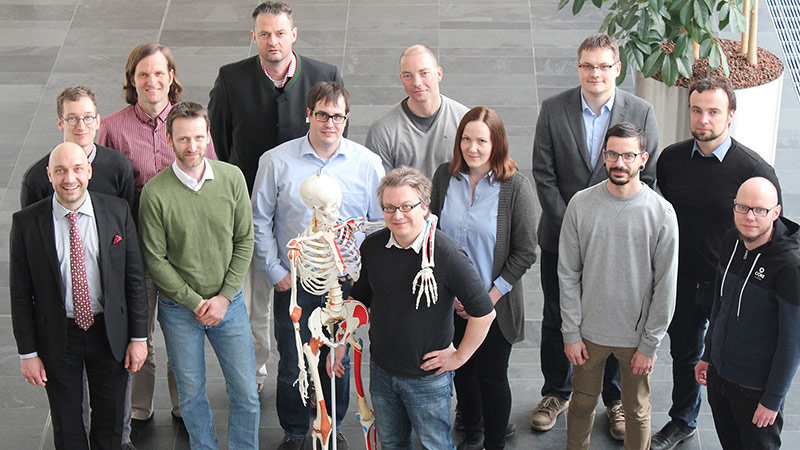Bones out of the printer
Saxon researchers are united by the joint vision to technically reproduce the highly complex and efficient material ‘bones’ and to make it available for medical and industrial applications
-

In the future, the participants of the workshop will try to technically reproduce the bones of a human skeleton in 3D print. Photo: Fraunhofer IWU Dresden
Saxon researchers from Chemnitz, Zittau, Dresden, and Leipzig met on the margins of the final symposium of the collaborative research center TR 39 PT-PIESA for a first interdisciplinary exchange in the field of biomechanics and production of bone-like structures in a workshop on March 29, 2018, at the Fraunhofer IWU Dresden. The experts from medicine, biomechanics, and production technology are united by the vision to technically reproduce and make the highly complex and efficient material ‘bone’ available for medical and industrial applications. Dr. Uwe Wolfram, researcher at Heriot-Watt University Edinburgh and expert on ‘lifelike materials’ as well as Dr. Mario Leimert, head physician at the Department of Neurosurgery at the Asklepios hospital in Neustadt, added professional input. “In the future, we want to combine our core competencies to focus on our joint research work and to further expand it in future projects”, said Simon Kimme, chief engineer at the Professorship for Adaptronics and Lightweight Design at Chemnitz University of Technology.
In the SAB research project, launched in April 2018, bone models will be produced via 3D print technology to support the training of physicians with improved surgical training models and simultaneously reduce the amount of animal experiments. Furthermore, researchers of Chemnitz University and the Fraunhofer IWU in Chemnitz, Dresden, and Zittau work on the integration of sensors and actuator functions in bone-like structures to close the research gap between applied medicine and science. The Saxon State Ministry for Higher Education, research and the Arts (SMKW) provides a research project funding for the project “Entwicklung von realistischen Knochenmodellen mit Sensorintegration ReBoneS” of approx. 368,000 euros until 2020.
(Author: Mandy Polster)
Mario Steinebach
11.04.2018




